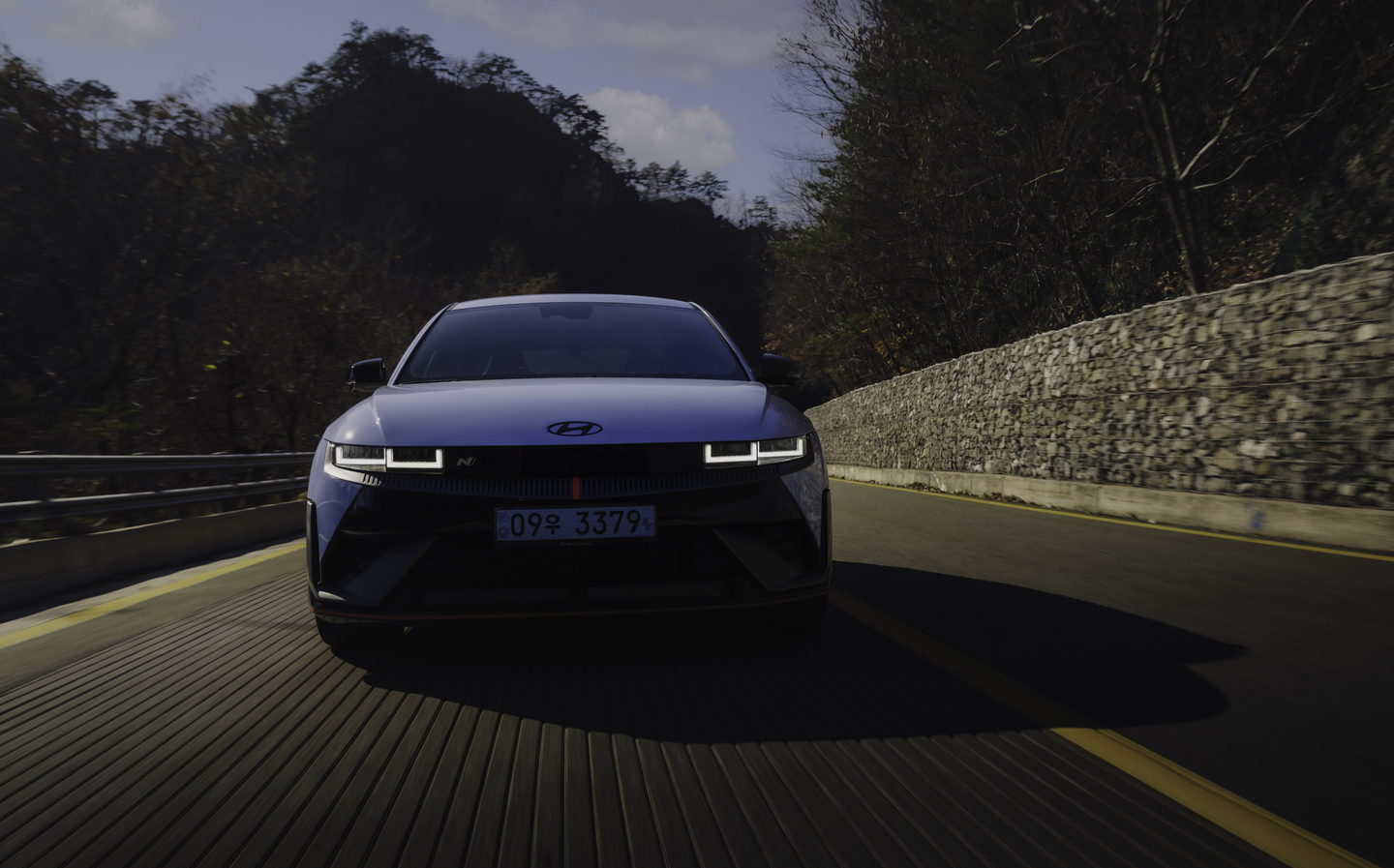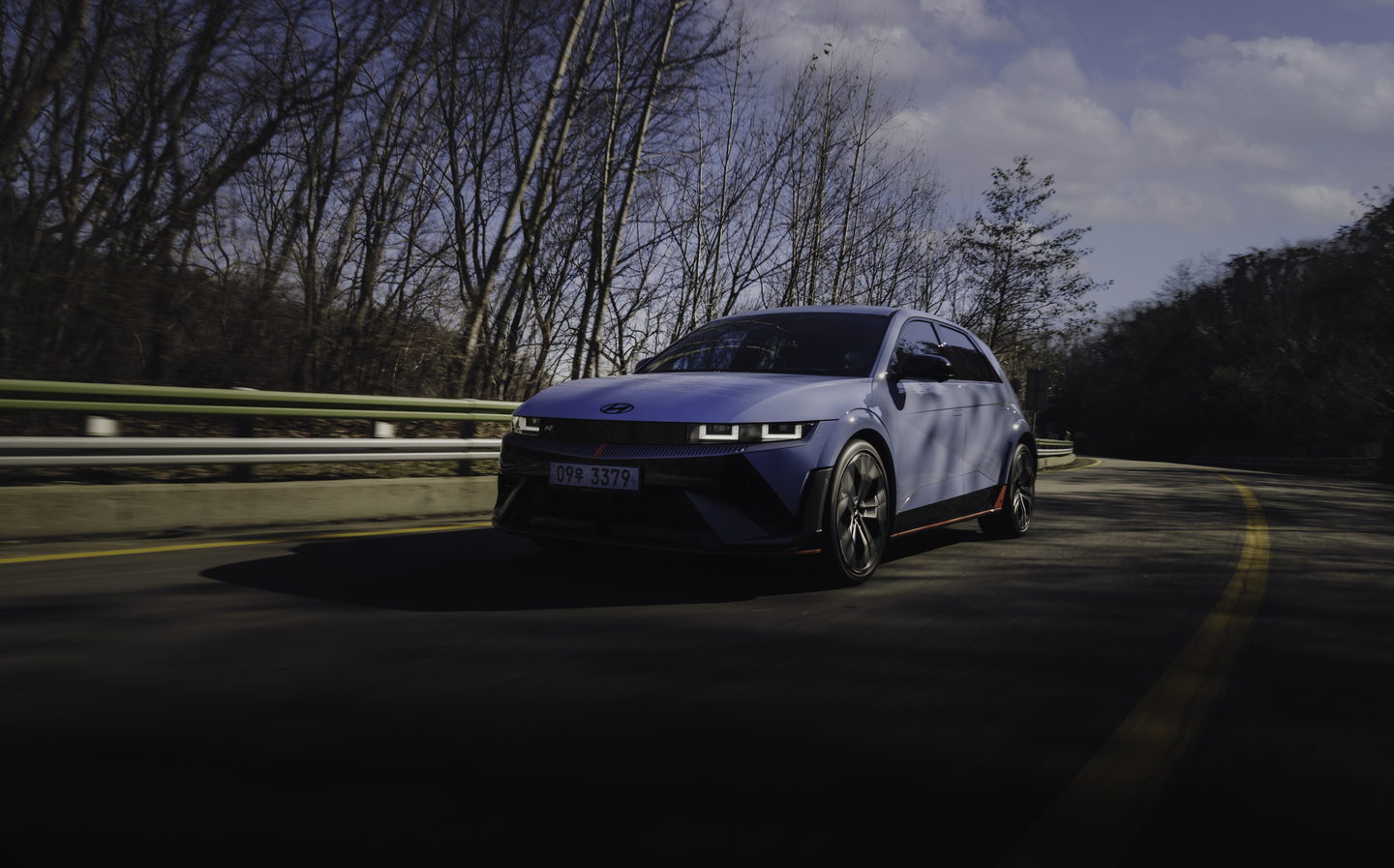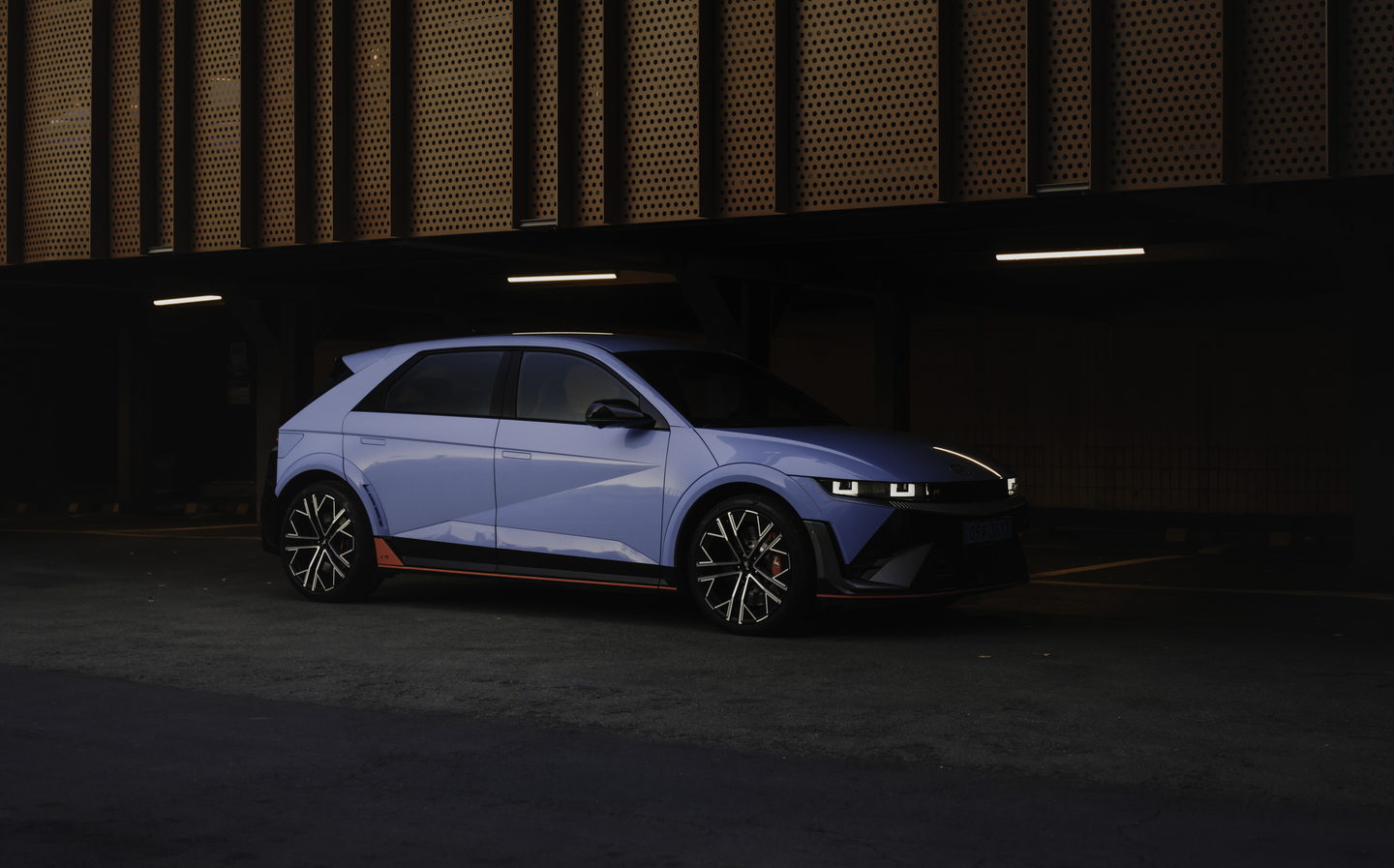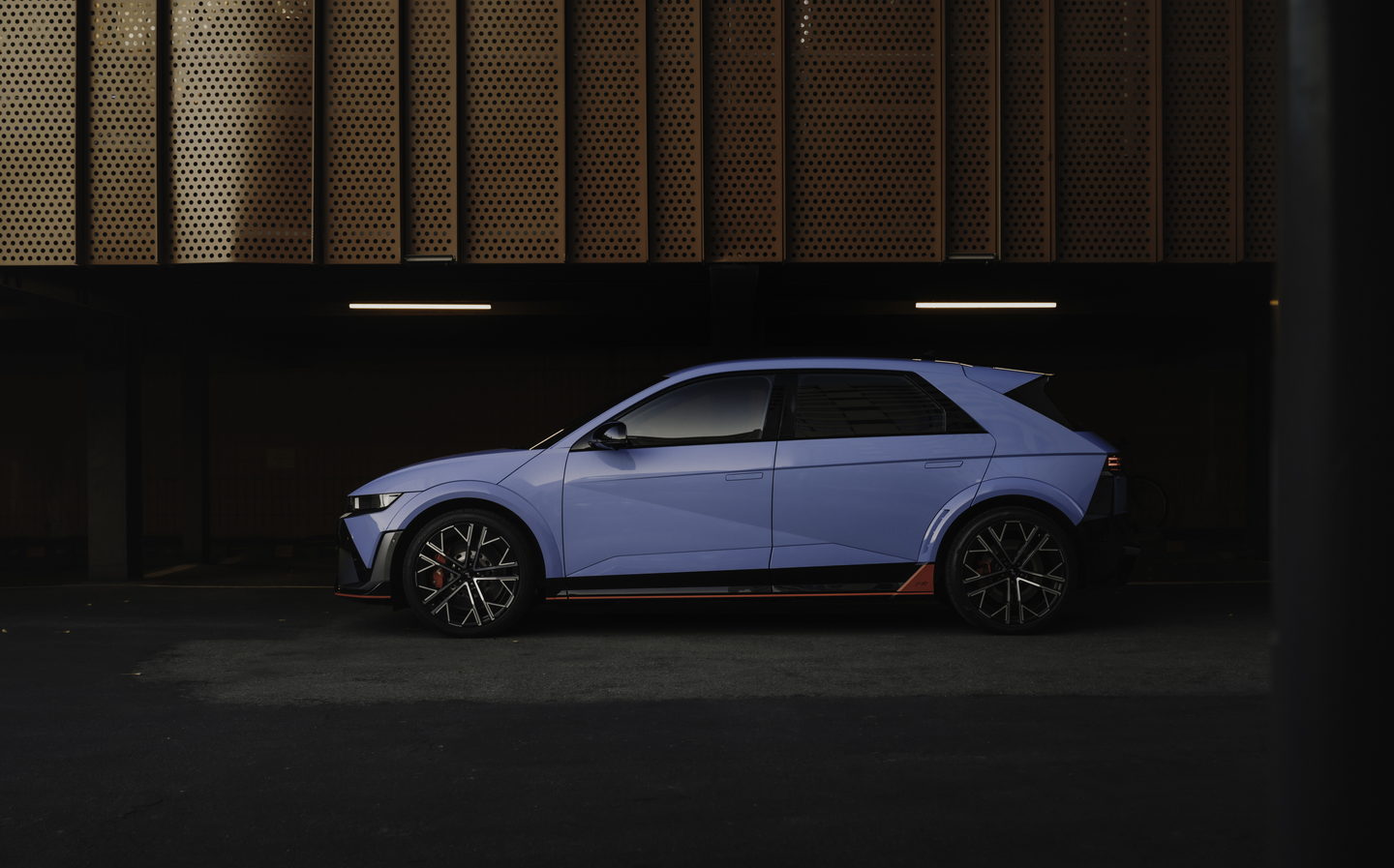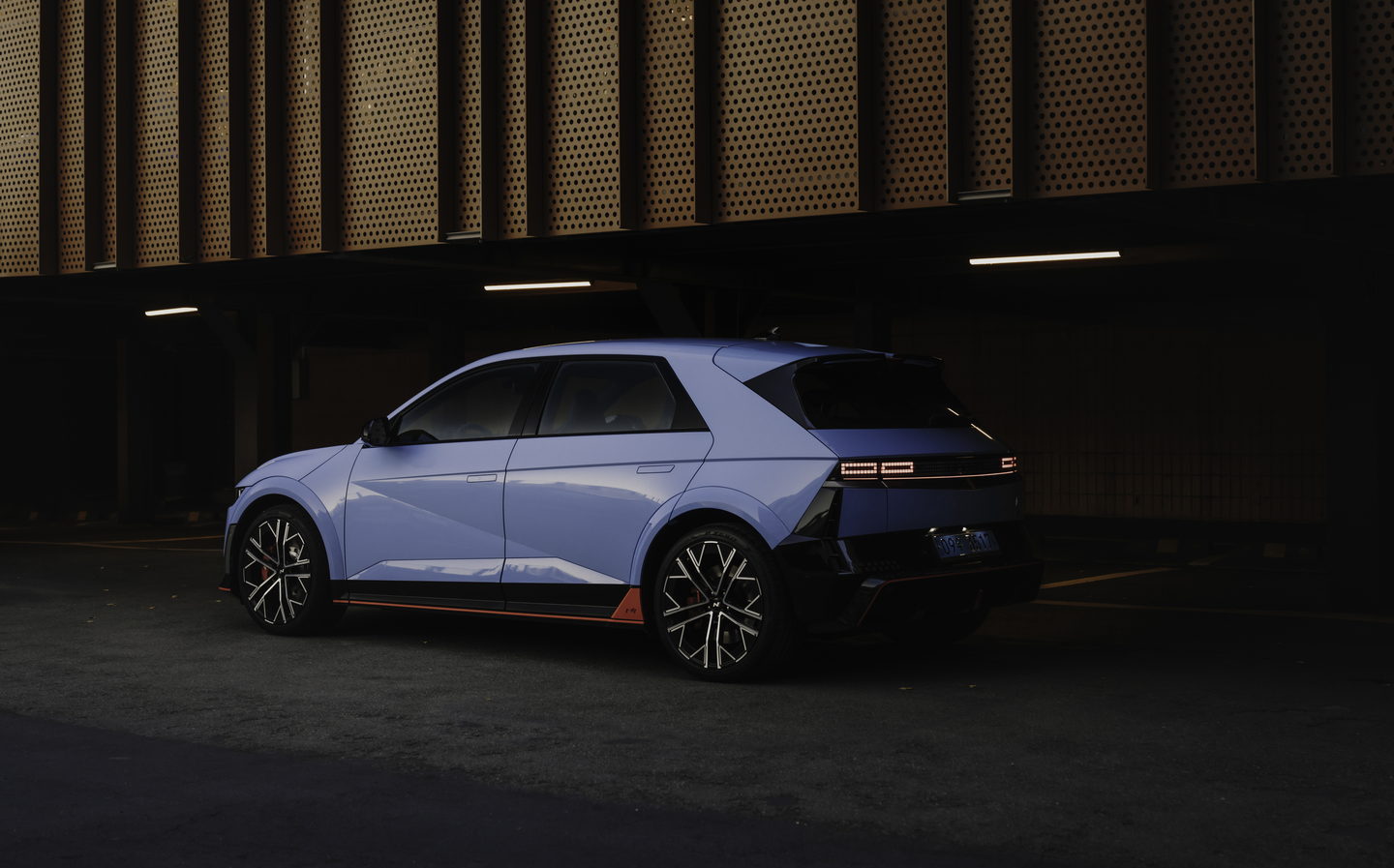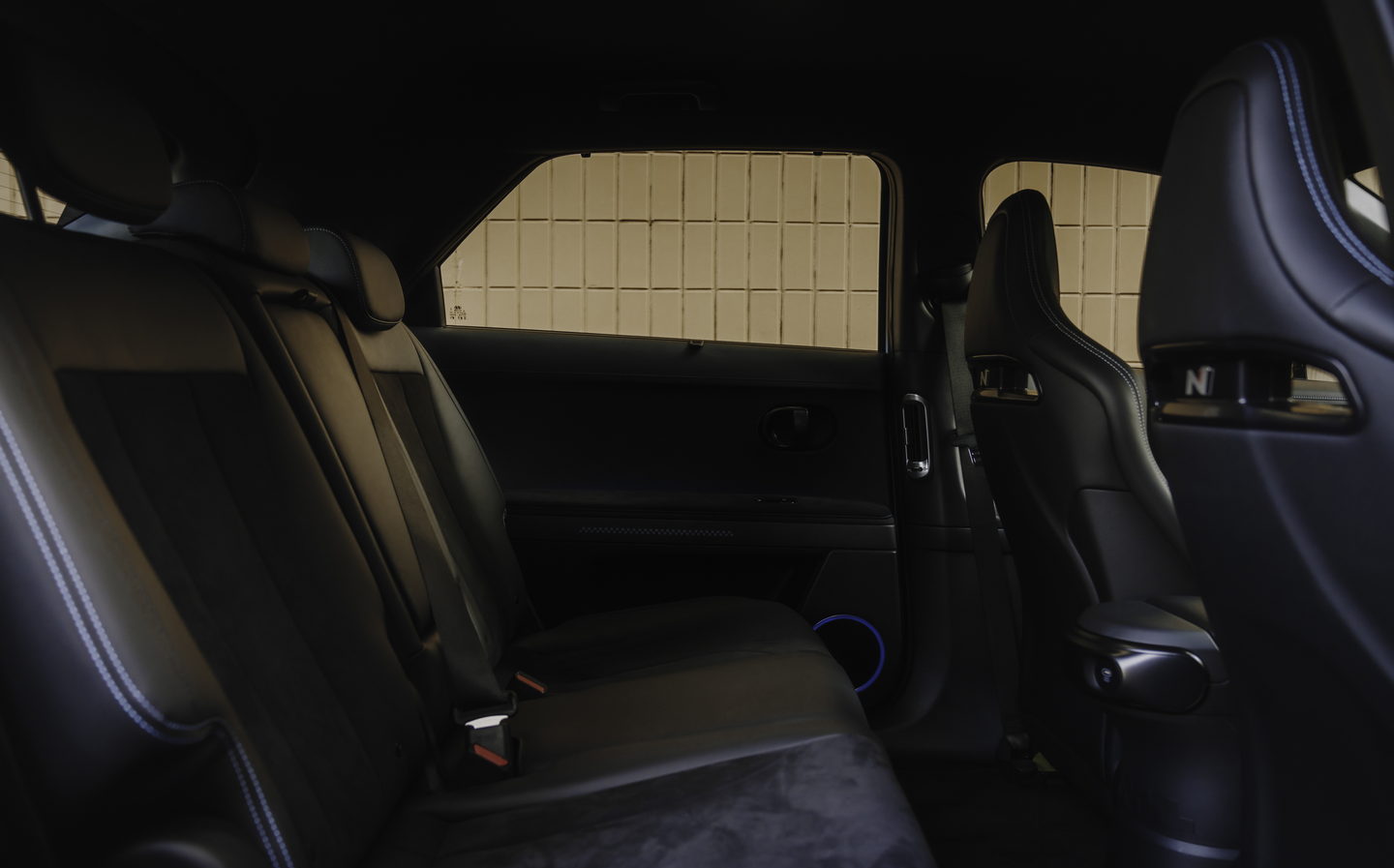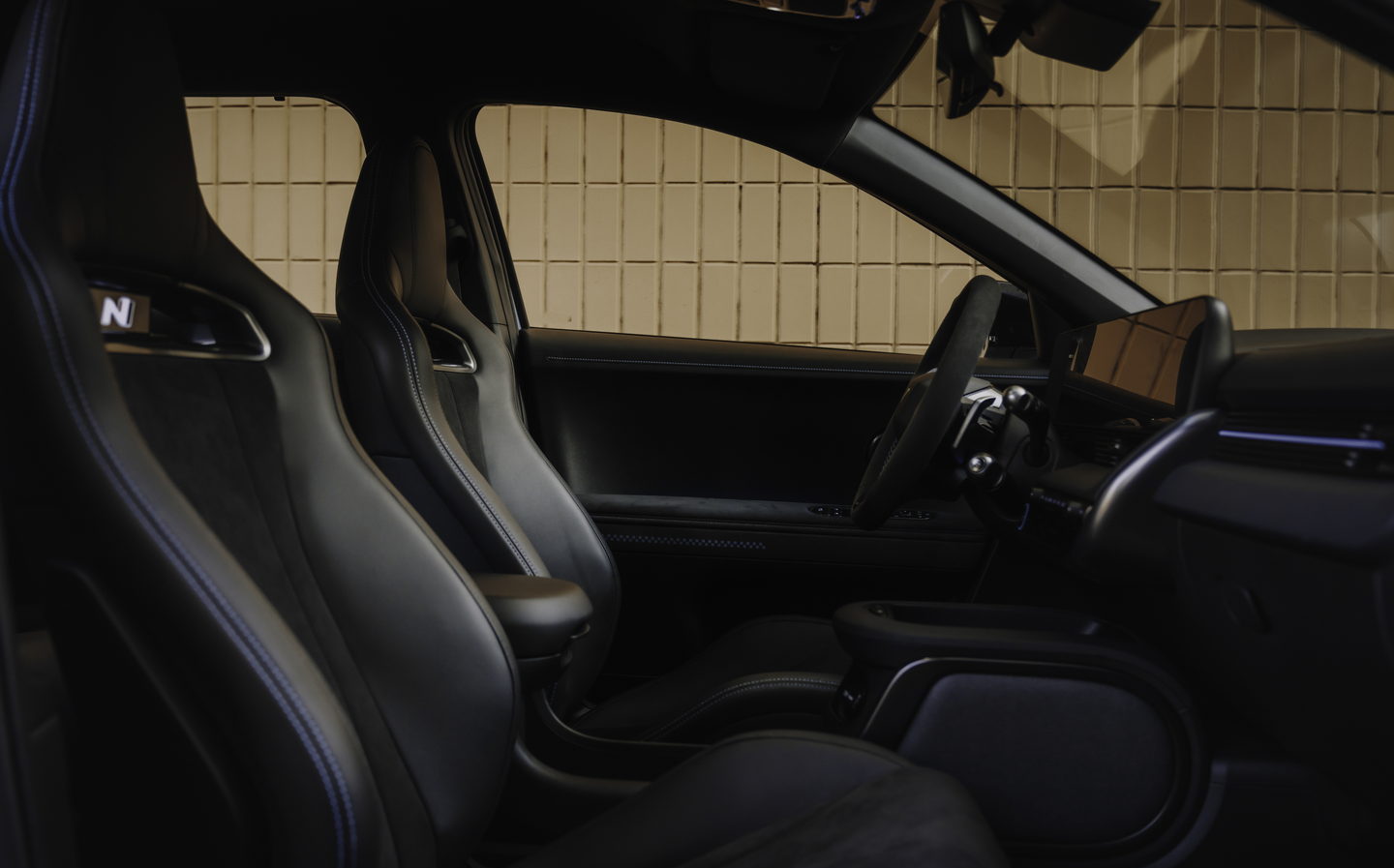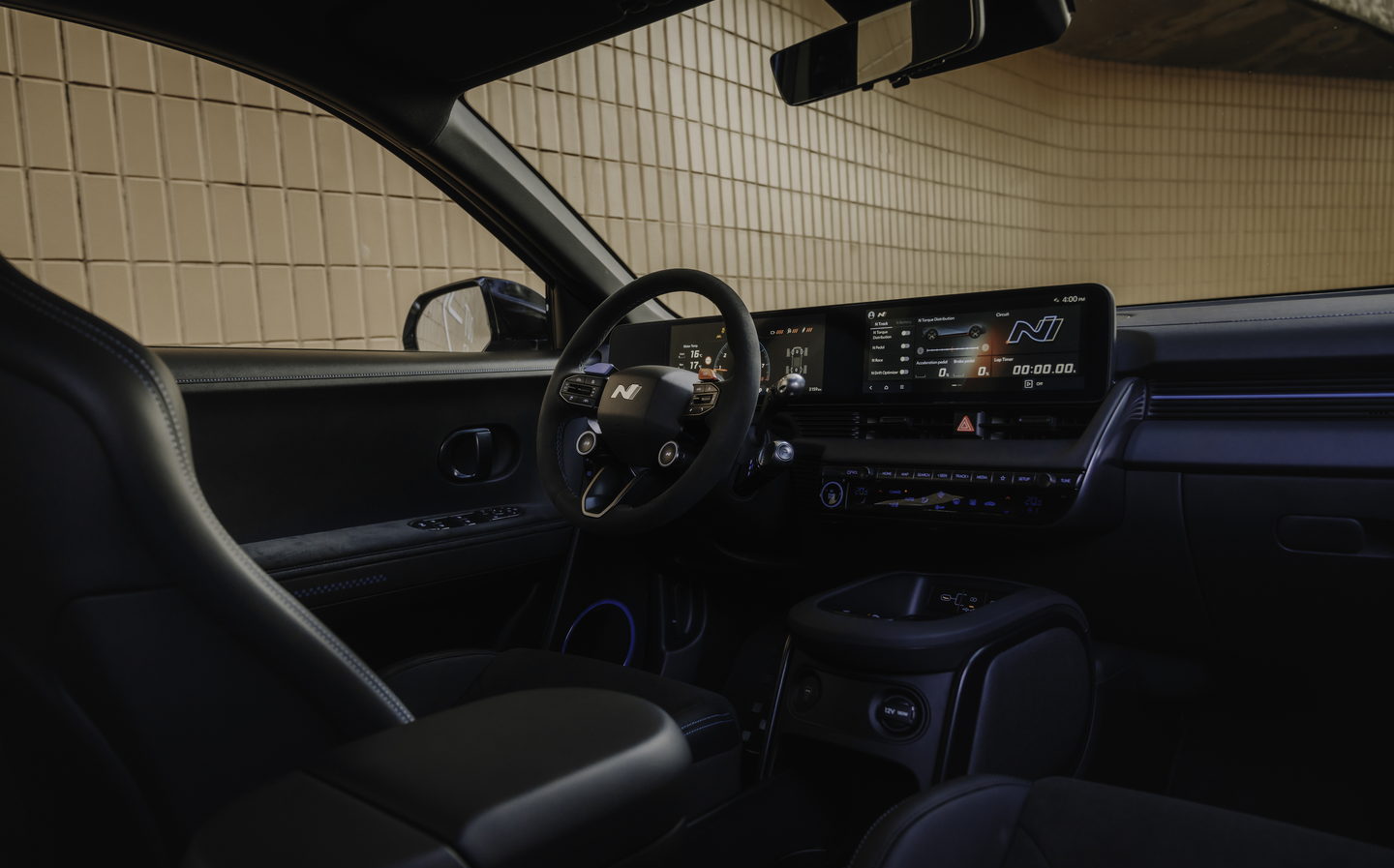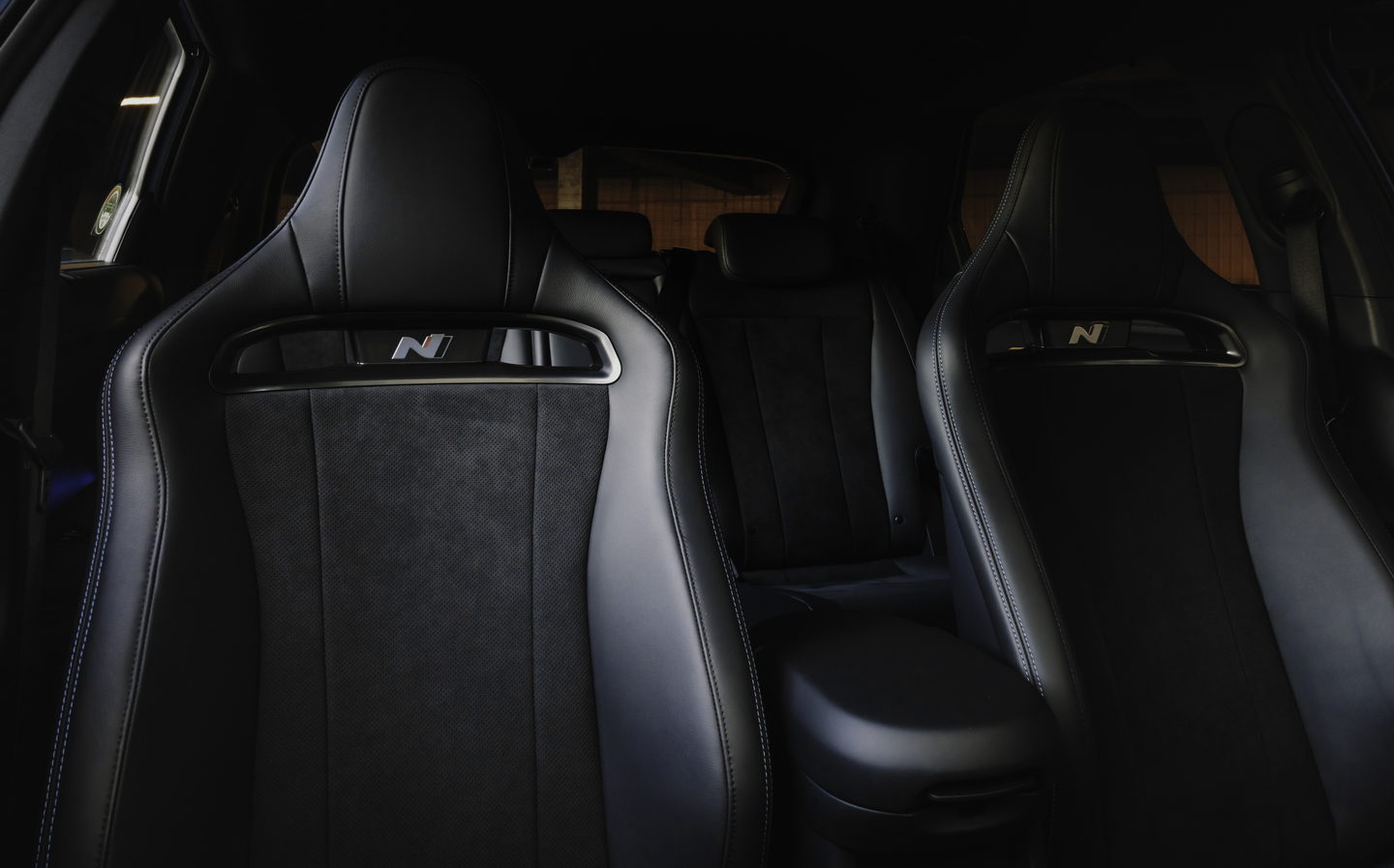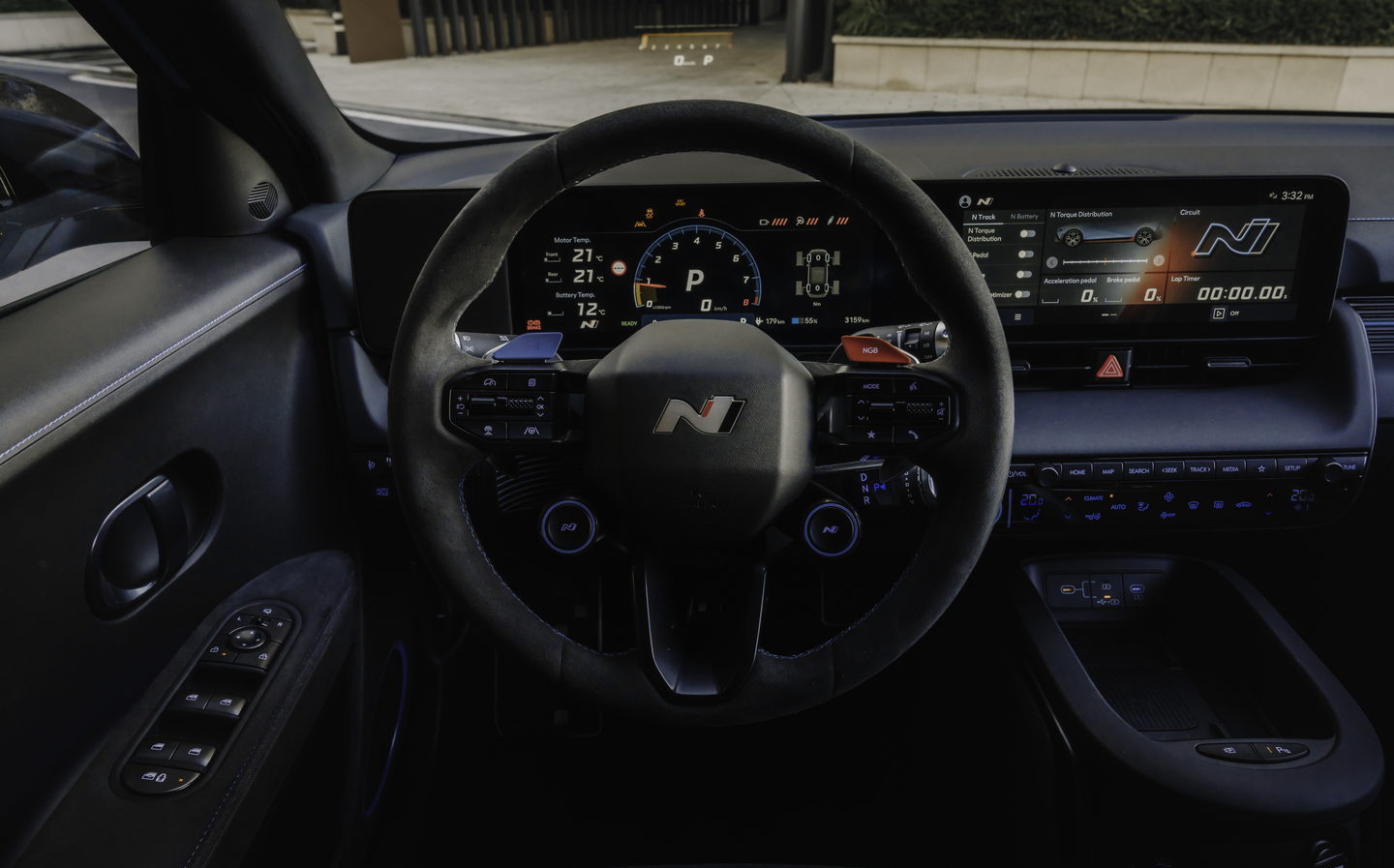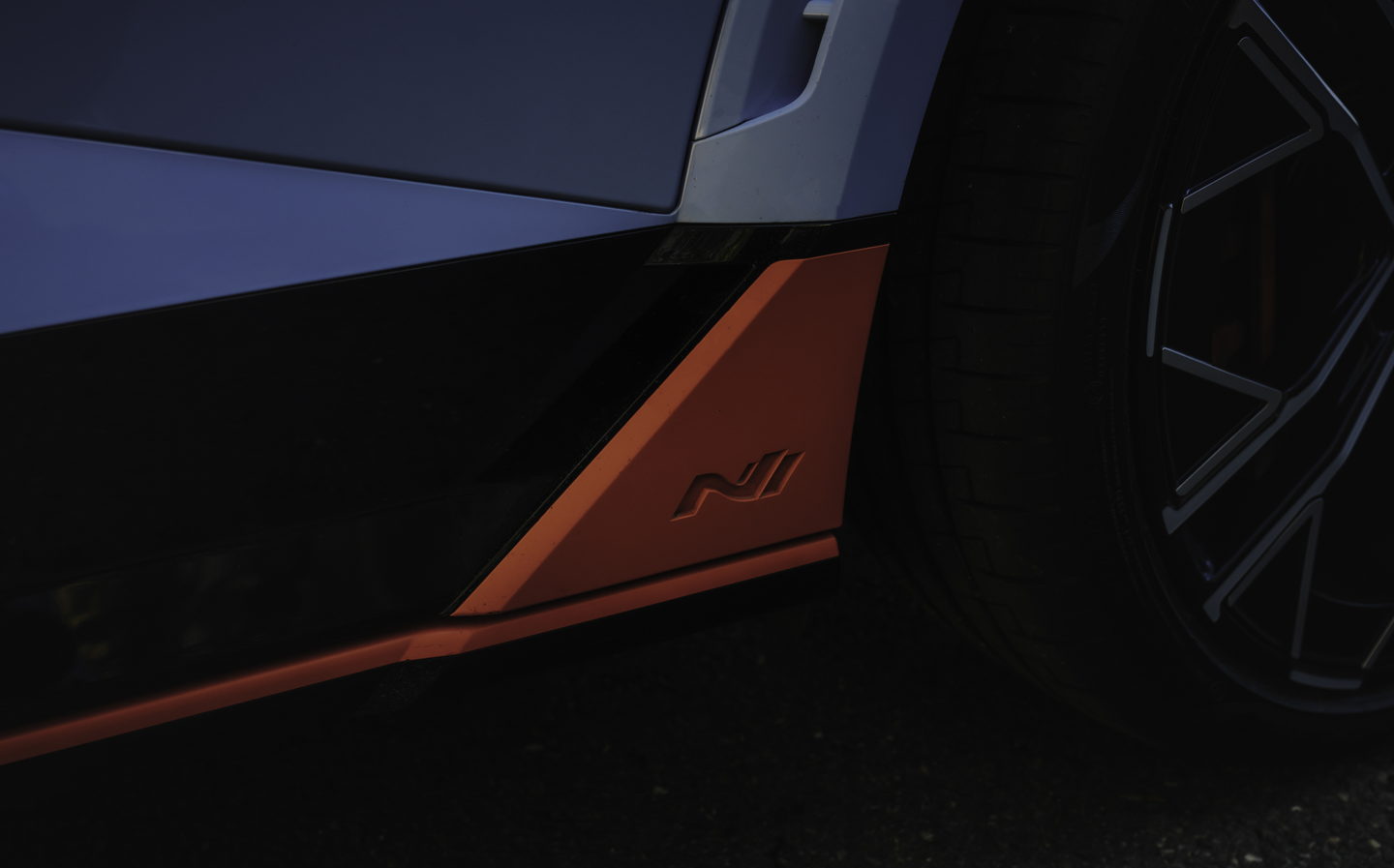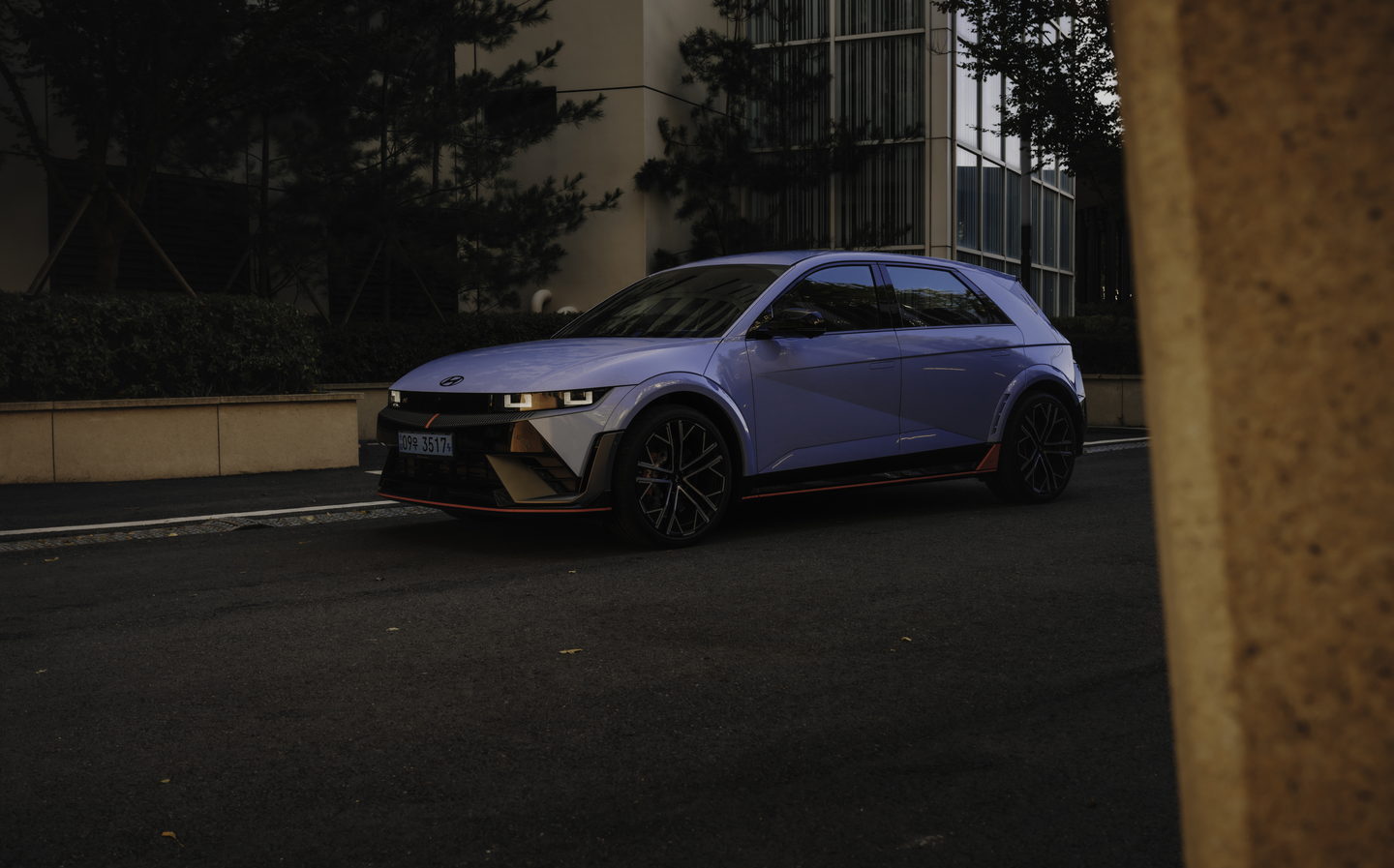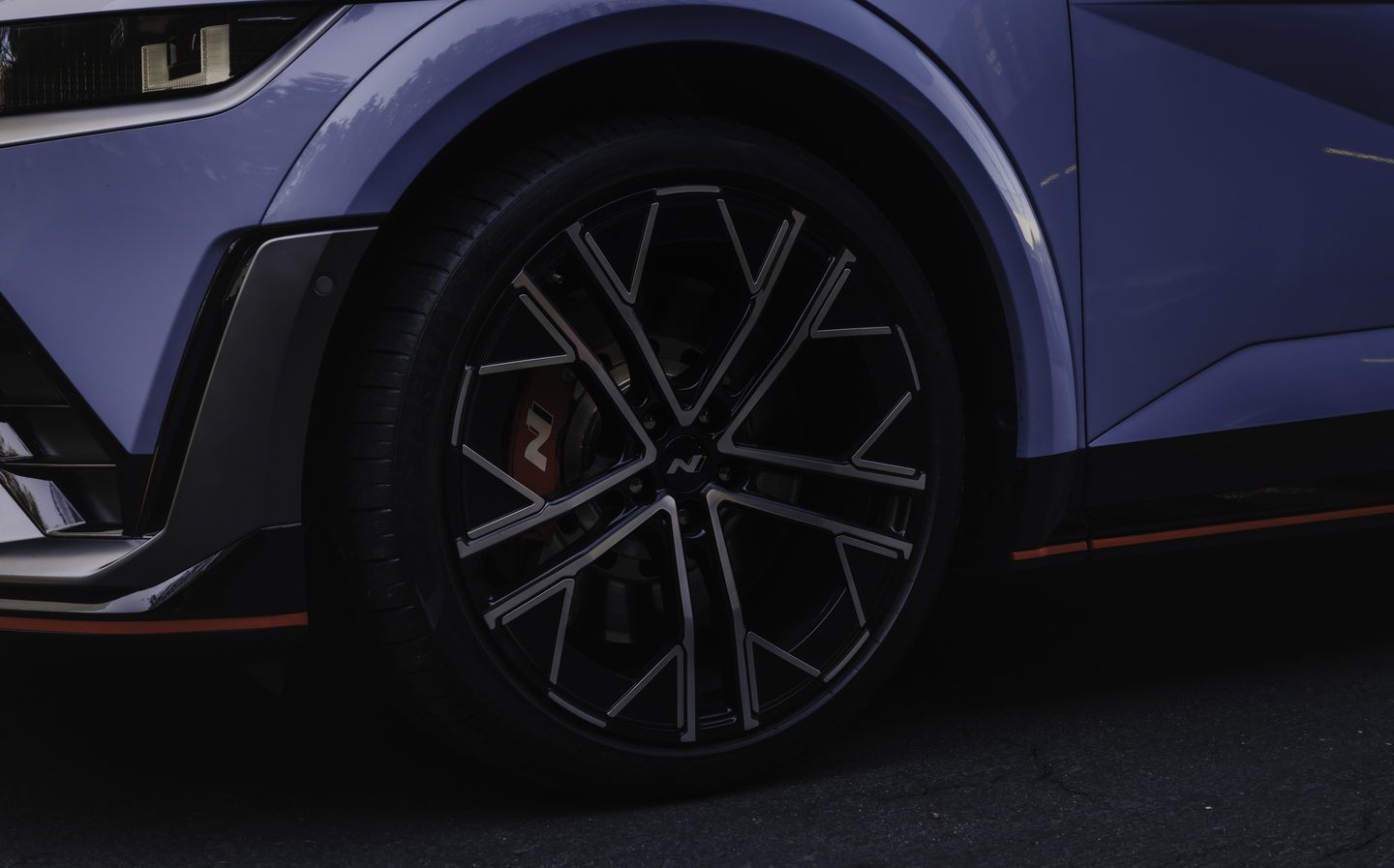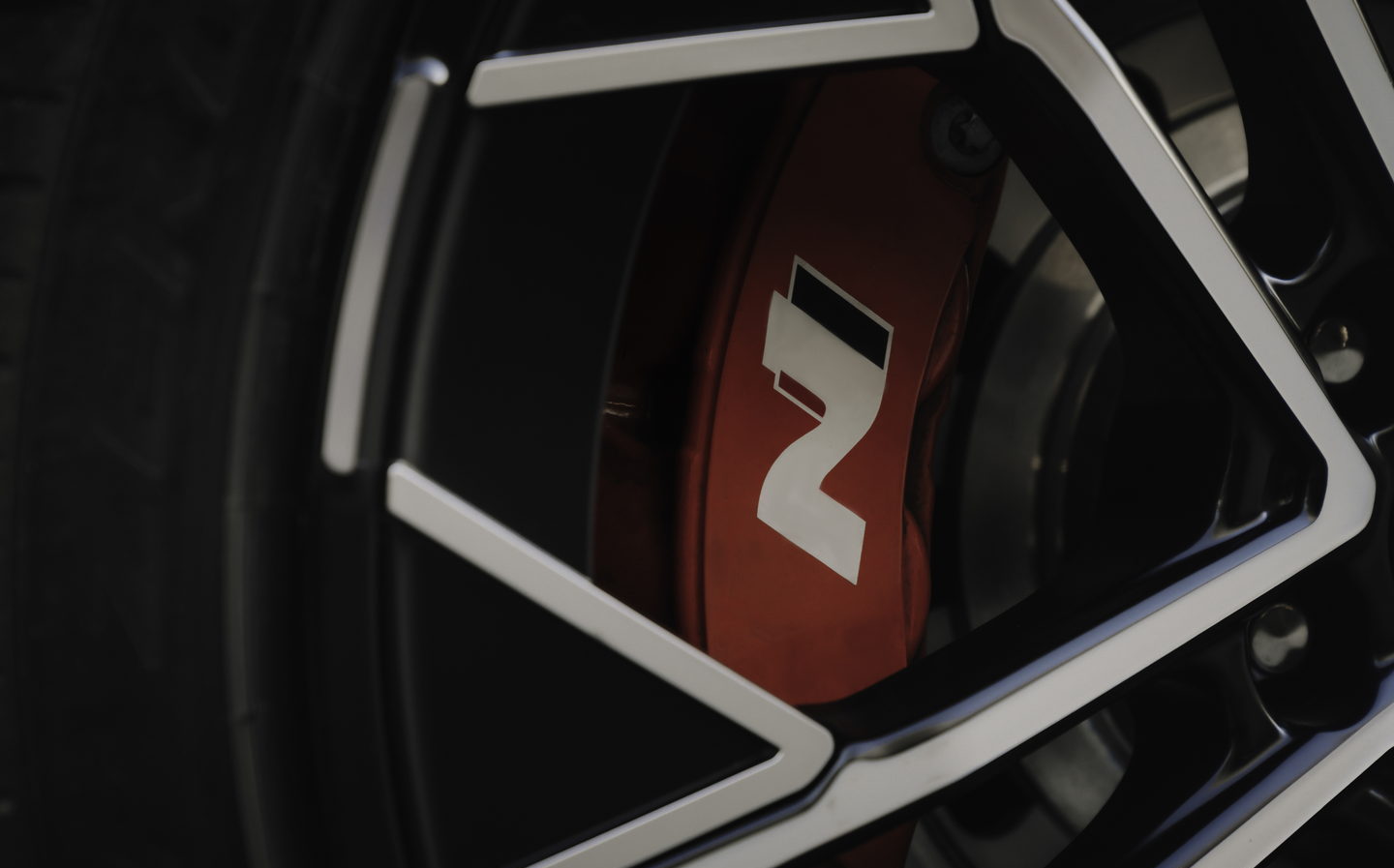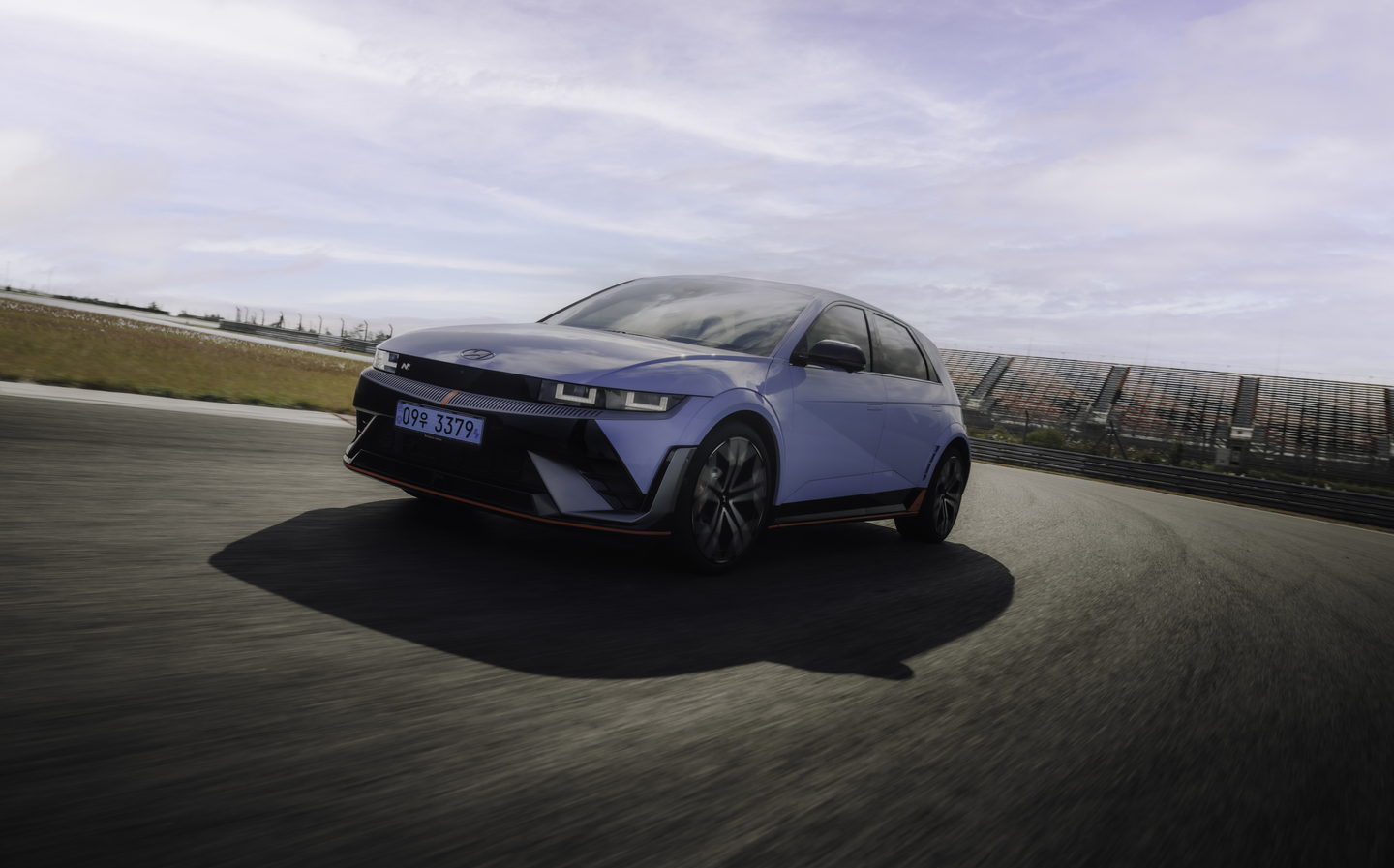Hyundai Ioniq 5 N prototype review 2023: A Korean super-hatch that just so happens to be powered by electricity
That sound? The BMW board sobbing
Albert Biermann’s reputation is on the line. Most normal people (petrolheads don’t count) won’t have the foggiest notion who Biermann is, but they’ll have heard of acclaimed sports cars such as the BMW M3, and that’s just one of the many vehicles for which the engineer was responsible during his time at the German company.
Biermann defected to Hyundai in 2015 to become president and head of R&D, and while improving the way in which humdrum models from the Korean brand drive, he was also instrumental in setting up the firm’s “N” sub-brand — unashamedly just one letter away from BMW’s M division in the alphabet and with a very similar remit: to develop truly exciting cars that will get driving enthusiasts frothing at the mouth.
Again, most normal people (petrolheads still don’t count) won’t know that Biermann has been highly successful in his Korean post, overseeing the development of numerous cars from Genesis, Hyundai and Kia. He has only recently stepped down from his senior position as he eyes up retirement in the not-too-distant future, but he can’t collect his carriage clock just yet, as his life’s work will come to nothing if the car you see here is a lemon.

This is the Hyundai Ioniq 5 N, the sub-brand’s first attempt at an electric performance car and the start of a new era for the firm where there will quite likely never be another petrol-fuelled car to bear the N badge.
Can this model really give keen drivers the excitement they crave despite the lack of exploding dinosaurs under the bonnet?
BMW M3-baiting performance
The bare numbers are encouraging for starters, with a dual-motor setup producing up to 641bhp and a BMW M3-beating 0-62mph time of just 3.4 seconds.
That maximum figure is only available if you press the N Grin Boost button (cringe) and for “only” 10 seconds, but if you’ve ever managed to keep an accelerator pedal pinned to the carpet for that length of time in a car as powerful as this then we can only assume that you’re reading these words from inside the walls of one of HM’s finest prisons.
Suffice to say that the always-available 600bhp figure is ample and, as ever in an electric car, it’s the instant torque output that makes it feel so neck-snappingly responsive. In this car, one minute you’re ambling along and the next you’re whooping and hollering in a visceral reaction to your organs wrapping around your spine.
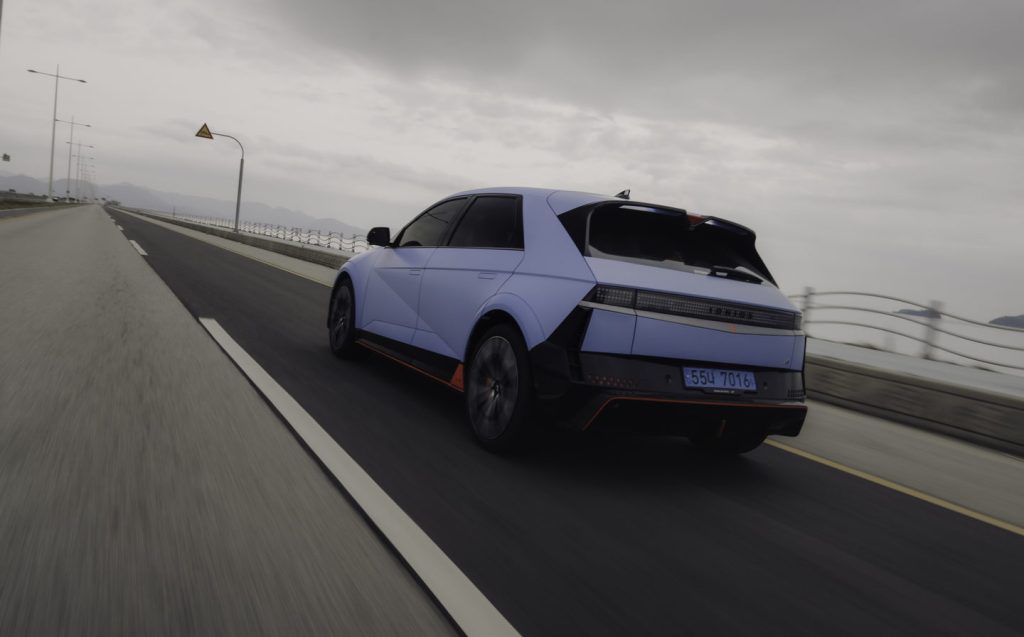
The world is not short of excessively powerful electric cars that can out-accelerate what are now know as “legacy” sports cars, so that’s not going to cut the mustard with those that really relish driving, as fun as it can be to scare your in-laws.
That’s why Hyundai is claiming that the Ioniq 5 N is the first super-fast EV “to provide the enthusiast driver with an emotional, aural and sensory connection to the vehicle.” That sounds like a load of marketing codswallop, but actually there’s a lot of interesting stuff to unpack here.
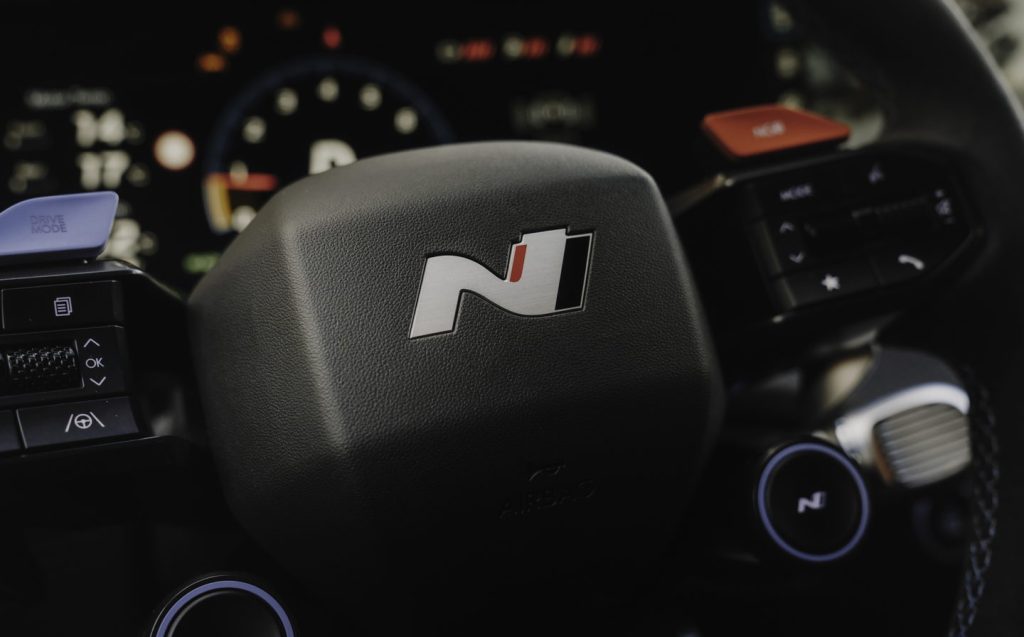
First up is the “N e-shift” function, using software to control the two electric motors in a bid to make the car feel like it has an eight-speed, dual-clutch gearbox. It even introduces little jolts in the power delivery and allows the driver to control the simulated gearshifts via paddles (usually used to alter the level of brake energy regeneration) behind the steering wheel.
Faking it never sounded so good
This feels a little pointless unless you have the N Active Sound+ feature enabled, a synthetic noise system, effectively, but one that’s considerably more advanced than most on the market. It plays sound through eight internal speakers and two on the outside of the car as well so passersby can enjoy/ be annoyed by your tomfoolery.
Three different themes are selectable, ranging from the hilariously sci-fi “Supersonic” fighter jet sound through the rather forgettable “Evolution” setting to the remarkably convincing “Ignition” mode that emulates the boisterous exhaust sounds of Hyundai’s own i30 N hot hatch.
Normally this sort of stuff irritates us (see our Abarth 500e review) but the in this case, with the fake gearchanges, it suddenly doesn’t feel so pointless. I found my scepticism taking a back seat as I began to engage with the car in a very old-school kind of way, and starting seeking out the twistiest of back roads.
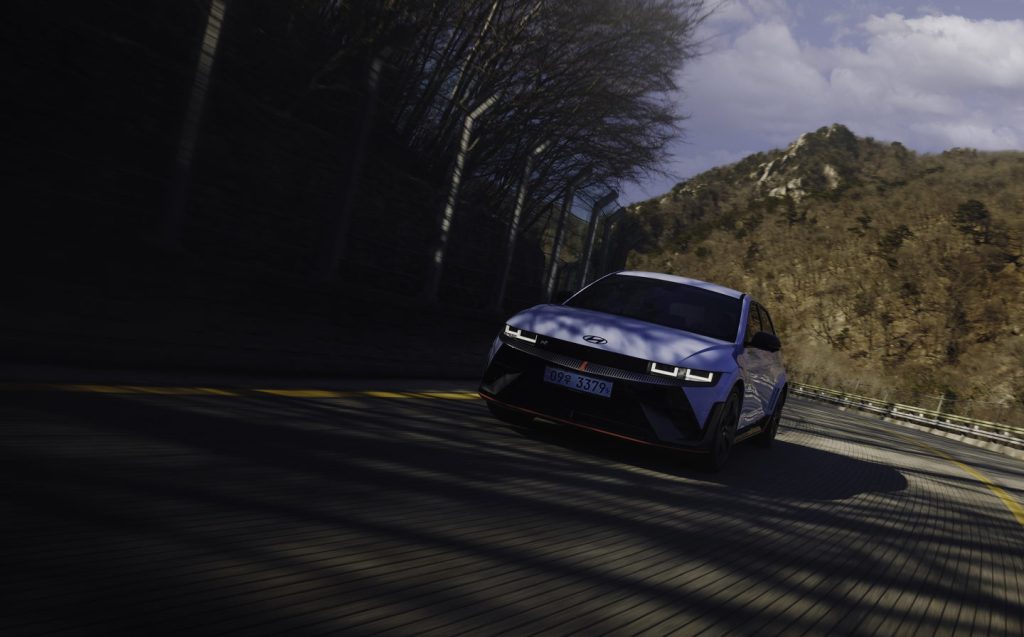
On which the Ioniq 5 N does not disappoint. To go along with the software-led interactivity, Hyundai has endowed this car with a serious engineering specification.
There are bigger dampers than in the standard Ioniq 5 and adaptive damping with three different levels. In its default setting, even on the low-profile 21in tyres, this car isn’t particularly uncomfortable, while its body control is exceptional at the other end of the scale, allowing you fling the car through quick direction changes with wild abandon.
Its composure into, through and out of tricky corners is helped by a proper electronically-controlled rear differential, allowing the driver to exploit the considerable performance on tap even in the middle of a tight bend.
Cleverly, the car utilises the brake energy regeneration function of the drive motors to further enhance its cornering ability by actively managing weight transfer into a turn. It hides its 2.2-tonne mass well, but to make sure the already beefy brakes can survive time on track they’re augmented by more use of the brake energy recovery system (which are usual on regular EVs).
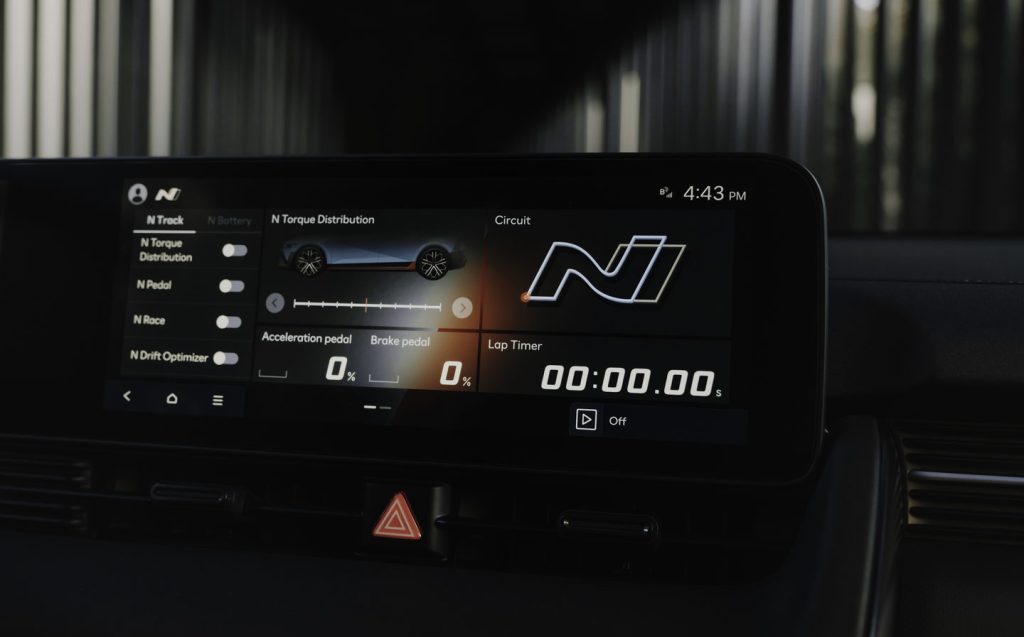
Yes, it drifts
On track you can also explore the success of the N Drift Optimizer function (yes, we’re still talking about an electric Hyundai here), which turns every driver into a drifting pro.
It even has a function that allows the more experienced to initiate a drift with a “torque kick” feature, simulating the technique of rapidly releasing the clutch pedal in a manual-equipped, petrol car in a bid to overcome the grip of the rear tyres. You’ll want to get a friends-and-family discount from your local Pirelli stockist before trying this out.
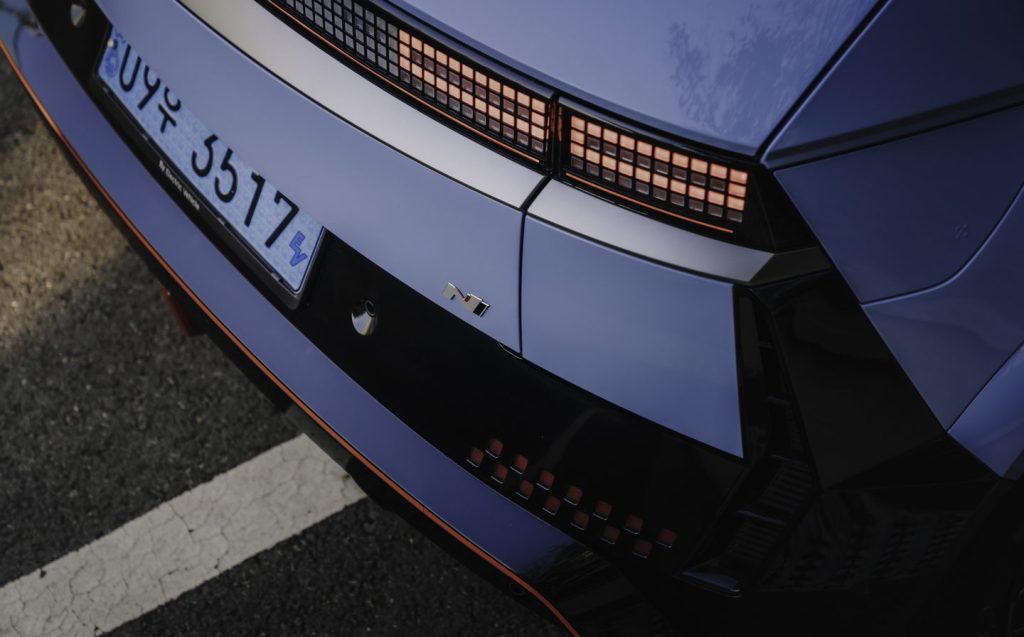
To reduce foot slippage during such shenanigans, the Ioniq 5 N gets special pedals. They are marked out by a new chequered flag motif that also references Hyundai’s distinctive “parametric pixel” design language that defines this car’s exterior lighting. The rest of the exterior makeover is relatively restrained, though impossible to miss thanks to an orange pinstripe all the way around.
Back inside, the cabin has been suitably upgraded, and it somehow mixes a hot hatch ambience with plenty of sustainable materials. The snug sports seats offer loads of support and sit 20mm lower in the car than the standard Ioniq 5’s, though there’s still room for three passengers in the rear, and while the boot is a little smaller to accommodate the extra hardware underneath, it’s still a practical enough car.
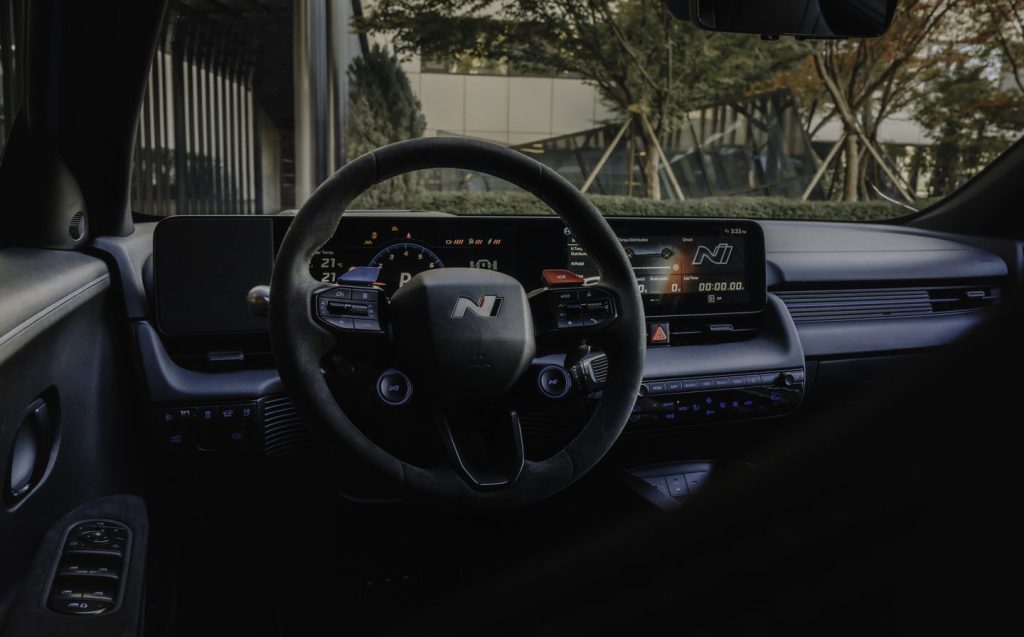
As in the regular model, the dashboard is dominated by a dual-screen setup though the N car gets unique graphics and menus.
Indeed, there’s a bewildering amount of customisation of the car’s sub-systems offered. For example, there are three different settings available for the launch control depending on how much traction you think is available. Those familiar with the approach of BMW M in that regard will feel at home here and in a similar manner, the driver’s favourite groups of settings can be quickly accessed via prominent, programmable “N” buttons on the chunky steering wheel.
It’s a bargain … honest
All this unique stuff comes alongside a generous standard specification with very few optional extras available. That’s just as well given the £65,000 asking price, over £20,000 more than the entry-level Ioniq 5.
Then again, the previous range-topper (the 320bhp, all-wheel-drive Namsan Edition) is knocking on for £59,000, so perhaps it’s not as silly a figure as it seems. And don’t even ask what the cheapest petrol car with this much performance costs.

First impressions suggest that the Ioniq 5 N lives up to the short heritage of that letter. It’s undoubtedly a very different performance car to what has gone before, but no less compelling nor exciting.
Whether it can provide such thrills and maintain driver involvement for more than a quick test drive remains to be seen of course. Does its appeal have longevity? That’s a big unknown, but for now we’d say that Albert Biermann’s work is done. But thankfully the Hyundai N is a template that heralds the beginning of something brilliant.
Related articles
- If you were interested in the new Hyundai Ioniq 5 N review, you may like to read our review of the Hyundai Ioniq 6, too
- Here are 10 things to know before you buy an electric vehicle
- These are all the car brands’ electric car plans
Latest articles
- Bedeo Defender 110 2024 review: Does electric Landie with in-wheel motors make for a perfect off-roader?
- F1 2024 calendar and race reports: What time the next grand prix starts and what happened in the previous rounds
- BYD Seal U 2024 review: Chinese brand adds plug-in hybrid SUV to its electrified line-up
- New Mini John Cooper Works revs up for Nürburgring 24-hour race debut
- Ineos Grenadier Quartermaster 2024 review: British pick-up is a tough mudder but too flawed to be a real workhorse
- Mini Cooper SE 2024 review: All-new electric hatchback is playing to the crowd
- Jeep Wrangler 2024 review: Impressive off road but you’d still have to be a committed contrarian to buy one
- Around 500 Ford workers in UK could go on strike over cost-of-living pay dispute
- Durham solar car team to take part in 24-hour race with smart tyres and night-driving solution


